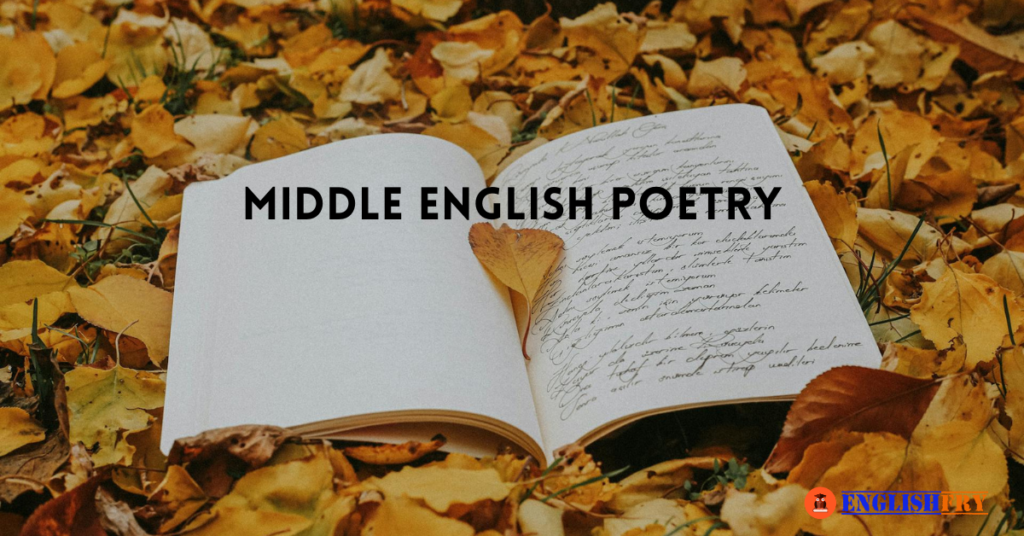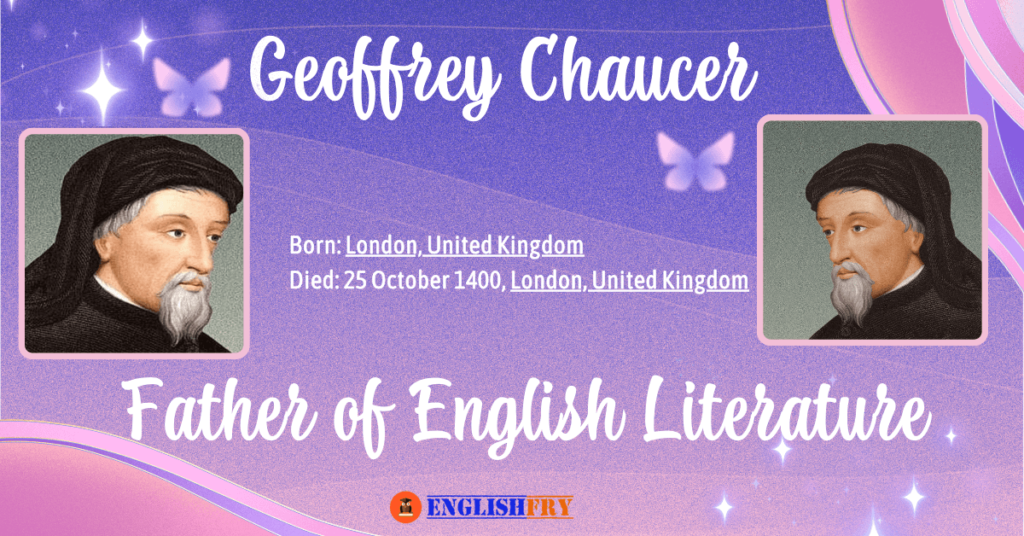Middle English Poetry
Norman Conquest/Battle of Hastings (1066-1340)
The Norman Conquest was the military conquest of England by William, Duke of Normandy, primarily effected by his decisive victory at the Battle of Hastings (1066), ultimately resulting in profound political, administrative, and social changes in the British Isles. There was an overthrow of the Government of England in 1066 by forces from Normandy, a province of northern France, under the leadership of William the Conqueror. William proclaimed himself King of England after defeating the English King Harold at the Battle of Hastings. Before the Normans, the Saxons ruled England for 600 years since Roman times.
1066 was a turning point in history, as William of Normandy started ruling. During his reign, a new English language developed. The Normans introduced the French language of the conquerors into literature, which impacted the Anglo-Saxon language, heavily influenced by Latin (the language of religion). The prose in octosyllabic couplets became a popular writing style in this age.
Poetry of the Chaucerian Age (1340-1400)
Chaucer is called the first modern writer, a reformer, and was appointed as a National Poet. This period is also known as the Age of Transition due to the many reforms that took place. Geoffrey Chaucer truly represents his age, as his works reflect the political, social, economic, and religious tendencies of his time. The fourteenth century in England was the most important of the medieval centuries, encompassing the period of the Black Death and the Peasants’ Revolt, the Hundred Years’ War with France, and significant social changes. During these years, two kings were deposed and murdered, and dynasties began to rise and fall. The antagonism towards the Church and the demand for freedom of thought were emerging as the Reformation began to be formed in this context.
Chaucer is known for his technique of writing like that of a fine craftsman and supreme writer because of his humor and irony. He wrote in Middle English, which was an unstable mixture of dialects, infused with thousands of words from French. This period includes his remarkable work, The Canterbury Tales. In this poem, he truly represented the comedy of life in all its forms. The Prologue to The Canterbury Tales provides the background of the actions and movements of the pilgrims who make up the company of the members of the troop undertaking this pilgrimage. All these pilgrims represent the entirety of English society of the fourteenth century.
Key Points
- There was a shift from prose to poetry/verse.
- There was a shift from descriptive literature to narrative (Example: The Canterbury Tales). Poetry became more realistic, portraying the social, economic, and political upheavals of the age (Example: Chaucer portrayed the vices of the Church and depicted the emergence of a capitalistic society from a feudal one).
- Along with French and Latin, English as a language also flourished in poetry. Chaucer chose the East Midland dialect, which he converted into the English language.
- The Black Death/The Great Plague (1348) also influenced the poetry of this age.
- It led to the Peasants’ Uprising of 1381, with people questioning the authority of the Church and religion. The Peasants’ Revolt, also named Wat Tyler’s Rebellion or The Great Rising, was a major uprising across large parts of England in 1381.
- The revolt had various causes, including the socio-economic and political tensions generated by the Black Death in the 1340s, high taxes resulting from the conflict with France during the Hundred Years’ War, and instability within the local leadership of London. The Hundred Years’ War (1337-1453) occurred between England and France.
During this period, social changes took place. Two kings were deposed and murdered, and dynasties began to rise and fall. The antagonism towards the Church and the demand for freedom of thought emerged as the Reformation began to take shape in this context.
Chaucer is known for his technique of writing like that of a fine craftsman and supreme writer due to his humor and irony. He wrote in Middle English, which was an unstable mixture of dialects, infused with thousands of words from French. This period includes his remarkable work, The Canterbury Tales. In this poem, he truly represented the comedy of life in all its forms. The Prologue to The Canterbury Tales gives us the background of the actions and movements of the pilgrims who make up the company of the members of the troop undertaking this pilgrimage. All these pilgrims represent the entirety of English society of the fourteenth century.
French Career
The Book of the Duchess: Written in octosyllabic couplets, it is a dream poem on the death in 1368 of Blanche, Duchess of Lancaster, the wife of John of Gaunt. The poem is Chaucer’s first work and is an elegy.
The Romaunt of the Rose: This translates to “Romance of the Rose” and is a translation of a French allegorical poem Le Roman de la Rose by French authors Jean de Meun and Guillaume de Lorris. The poem is written in octosyllabic couplets.
An ABC (The Prayer of Our Lady): The poem is divided into three sections.
Latin Career
Chaucer undertook many diplomatic tours to Italy after becoming a National Poet. As a result, he came into contact with Italian writers, including Dante, Petrarch, and Boccaccio. This led to the flourishing of Chaucer’s Latin career.
The Parlement of Foules/The Parlement of Brides
The Assembly of Foules: The poem is a dream vision, an allegory of 700 lines, written to celebrate the marriage of Richard II to Anne of Bohemia. It depicts an assembly of birds (briddes) with St. Valentine sitting with a female eagle on his wrist. The birds claimed their superiority to marry the white eagle, but they could not win her heart. Here, Chaucer seems to give a didactic ending to the poem, asserting that true love does not demand any superiority or claim.
The House of Fame: This is another dream poem influenced by Dante’s The Divine Comedy. Here, Chaucer becomes a participant in his writing, visiting the Latin poet Ovid’s House of Fame to learn about love. He uses the new verse form of the Rhyme-Royal stanza. The work is also called the “masterpiece of comic fantasy.” Chaucer dreams he is picked up by an eagle that drops him at a glass palace called the House of Fame. Here, he meets three kinds of people: those who want to work to earn fame, those who aspire for fame but do not wish to work, and those who want to work regardless of fame. Ultimately, the third category receives “fame.”
Troilus and Criseyde: This work takes its source from the Italian writer Boccaccio and is based on the Trojan War. Troilus, a warrior, falls in love with the widow Criseyde but is ultimately deceived by her, pointing to the inconstancy of some women. Like many poems by Chaucer, it is written in the Rhyme-Royal stanza and has even been called “the first modern novel.” However, later, Chaucer attempts to redress the balance in women’s favor in his work The Legend of Good Women, a palinode, where he praises ten female characters.
English Career
The Legend of Good Women: This is the first English poem to use heroic couplets, describing some of the famous classical women who sacrificed themselves for love.
The General Prologue to The Canterbury Tales: This was the first book written in English in 1388. It is believed that Chaucer wanted to write 124 tales, but only 24 were completed. There are 31 pilgrims, including Harry Bailey and Chaucer himself. The pilgrims are individuals of all ranks and classes of society, and through Chaucer’s vivid descriptions of their manners, dress, persons, horses, etc., we behold a vast and detailed portrait gallery of the social state of England in the fourteenth century.
The Canterbury Tales is a “frame story” (where stories are told within a story that Chaucer narrates). The General Prologue is, in some respects, the most remarkable product of Chaucer’s genius, serving as an extended “dramatis personae” for the collection of tales. The old feudal system, where social standing was determined by the amount of land a man held from the king, was giving way to a more open and mercantile economic pattern, especially in London, where Chaucer came from the merchant class. He was not a man of the people, but his origins were equally remote from the nobility; there are no barons among his pilgrims, who head towards the Shrine of Saint Thomas à Becket. Chaucer never judges, allowing his readers interpretative freedom.
The opening lines of the Prologue, which inversely reference lines in Eliot’s The Waste Land, portray April as the spring month when showers bring new fertility to the earth, symbolizing a reawakening and rebirth, contrasting with April’s depiction in The Waste Land as “the cruelest month, breeding lilacs.”
“Whan that Aprille with his shoures soote,
The droghte of March hath perced to the roote,
And bathed every veyne in swich licóur
Of which vertú engendred is the flour;
Whan Zephirus eek with his swete breeth
Inspired hath in every holt and heeth
The tendre croppes, and the yonge sonne
Hath in the Ram his halfe cours y-







